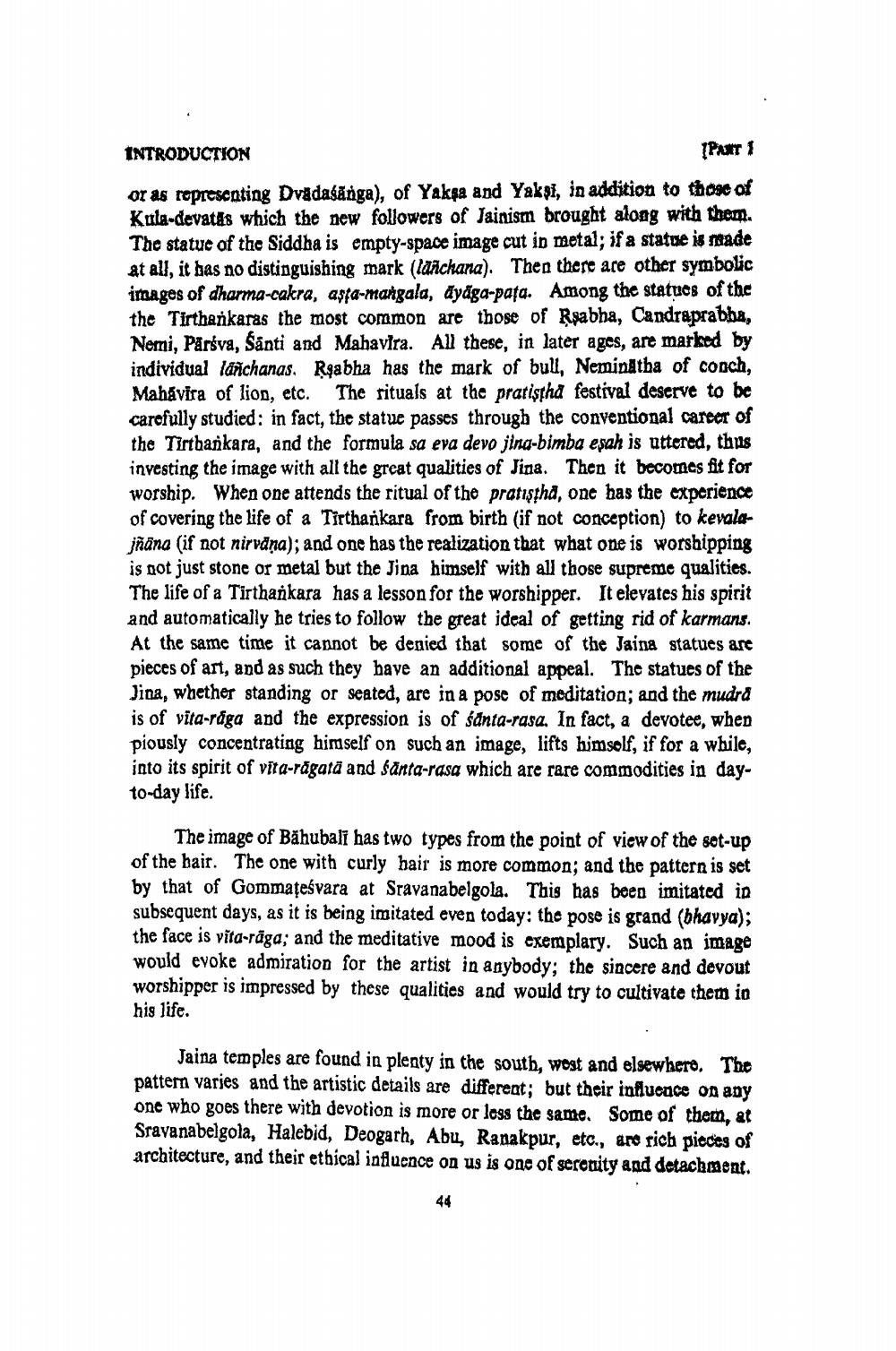________________
INTRODUCTION
[PART 1
or as representing Dvadasanga), of Yaksa and Yaksi, in addition to those of Kula-devatas which the new followers of Jainism brought along with them. The statue of the Siddha is empty-space image cut in metal; if a statue is made at all, it has no distinguishing mark (lanchana). Then there are other symbolic images of dharma-cakra, asta-mangala, ayaga-pata. Among the statues of the the Tirthankaras the most common are those of Rsabha, Candraprabha, Nemi, Parsva, Santi and Mahavira. All these, in later ages, are marked by individual lanchanas. Raabha has the mark of bull, Neminatha of conch, Mahavira of lion, etc. The rituals at the pratistha festival deserve to be carefully studied: in fact, the statue passes through the conventional career of the Tirthankara, and the formula sa eva devo jina-bimba eşah is uttered, thus investing the image with all the great qualities of Jina. Then it becomes fit for worship. When one attends the ritual of the pratistha, one has the experience of covering the life of a Tirthankara from birth (if not conception) to kevalajñāna (if not nirvāṇa); and one has the realization that what one is worshipping is not just stone or metal but the Jina himself with all those supreme qualities. The life of a Tirthankara has a lesson for the worshipper. It elevates his spirit and automatically he tries to follow the great ideal of getting rid of karmans. At the same time it cannot be denied that some of the Jaina statues are pieces of art, and as such they have an additional appeal. The statues of the Jina, whether standing or seated, are in a pose of meditation; and the mudra is of vita-rága and the expression is of santa-rasa. In fact, a devotee, when piously concentrating himself on such an image, lifts himself, if for a while, into its spirit of vita-ragata and Santa-rasa which are rare commodities in dayto-day life.
The image of Bahubali has two types from the point of view of the set-up of the hair. The one with curly hair is more common; and the pattern is set by that of Gommatesvara at Sravanabelgola. This has been imitated in subsequent days, as it is being imitated even today: the pose is grand (bhavya); the face is vita-raga; and the meditative mood is exemplary. Such an image would evoke admiration for the artist in anybody; the sincere and devout worshipper is impressed by these qualities and would try to cultivate them in his life.
Jaina temples are found in plenty in the south, west and elsewhere. The pattern varies and the artistic details are different; but their influence on any one who goes there with devotion is more or less the same. Some of them, at Sravanabelgola, Halebid, Deogarh, Abu, Ranakpur, etc., are rich pieces of architecture, and their ethical influence on us is one of serenity and detachment.
44




